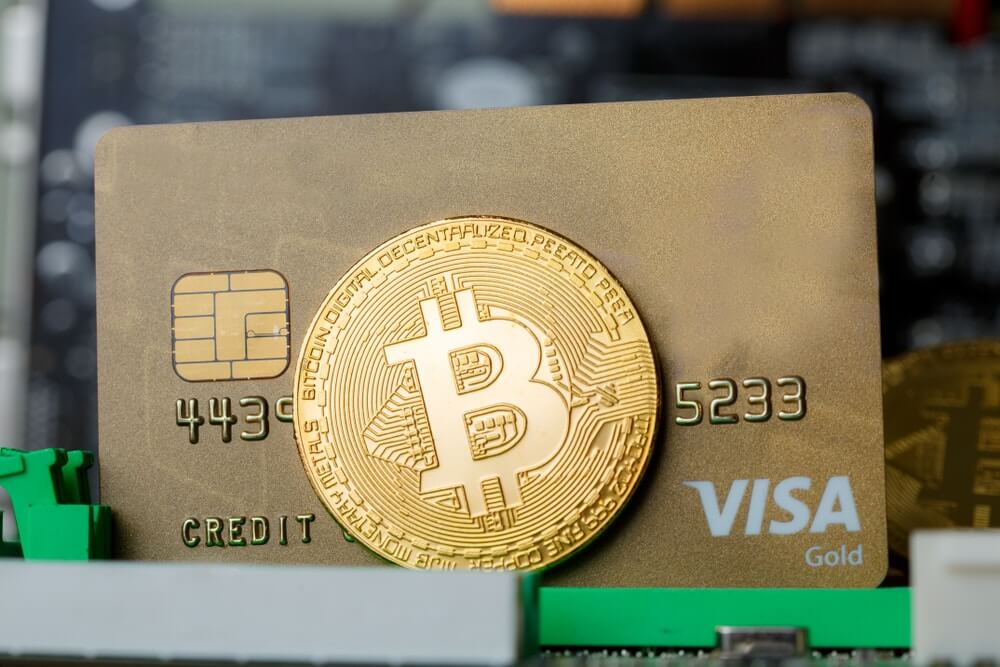
Day trading altcoins – a simple guide for a quick profit
Most financial markets, including stocks, forex, commodities, and of course, cryptocurrency markets, have day traders. In the crypto world, one of the most popular trading methods is day trading altcoins. However, is it a good idea to trade cryptocurrency on a daily basis? This article will tell you what you need to know before you start day trading altcoins. More concretely, we cover:
- Differences between Bitcoin, altcoins and stablecoins
- Best coins to trade in 2022
- How to buy altcoins on a trading platform
- Altcoin day trading strategies
Day trading altcoins: What are the types of cryptocurrencies?
For decades, traders have focused their efforts on a few key markets to profit from them. Cryptocurrencies have been seen as a developing industry with improved liquidity and trading profit opportunities in recent years.
A cryptocurrency is a digital asset protected by consensus techniques such as proof of work or proof of stake, and transaction data is maintained on a digital ledger. Thousands of cryptocurrencies now exist, providing a wide range of trading options for day traders.
Bitcoin

Bitcoin has become the industry standard in the field of cryptocurrencies. Not only has the digital asset grown in popularity, but it has also advanced in terms of technology.
Bitcoin is intended to be a decentralized digital currency that can be used anywhere in the world without fear of censorship. Bitcoin has a limited number of 21 million coins that can be mined at any time.
With a market capitalization of around $200 billion, it has remained the most valuable cryptocurrency in the market.
Bitcoin accounts for more than half of all business activity, with billions of dollars in daily turnover. Bitcoin represents one of the most popular options for people wanting to trade cryptocurrencies due to its high liquidity.
Alternative coins – Altcoins
An altcoin is a crypto coin that is not bitcoin. Cryptocurrencies in this category have a wide range of technological differences and applications, ranging from developing decentralized applications (dApps) to building a world of decentralized finance and beyond.
Ethereum, a programmable open-source blockchain, is one of the best-known altcoins. Many other altcoins exist in the form of ERC-20 tokens, which are based on the Ethereum protocol. EOS and TRON are two of them.
Stable Coins
There is a type of cryptocurrency that has gained popularity among traders and investors. Stablecoins are cryptocurrencies with a reasonably constant price because they are pegged to fiat currency.
Tether (USDT) is the most popular among stablecoins, with a price tied to the US dollar. Many crypto exchanges avoid trading USD for regulatory reasons, but listing coins against USDT allows them to quote against the world’s primary reserve currency without really caring about it.
Tether is a great trading pair for bitcoin and altcoin traders because it allows them to trade in cryptocurrencies without having to offload capital to fiat currency and then re-enter the market.
Day trading altcoins: What does day trading altcoins represent?

It’s a trading strategy in which traders enter the position and exit on the same trading day. This method is also popular as intraday trading because the trading takes place on the same day. Day traders aim to profit from price fluctuations in a financial instrument by employing intraday trading tactics.
The expression “day trader” comes from the stock market, where transactions are only made on working days. Day traders never leave positions open overnight because they want to take advantage of intraday price changes.
Best Altcoins for Day Trading in 2022
Besides Bitcoin, here are the best altcoins to trade in 2022.
- Binance Coin
- Ripple
- Litecoin
- Cardano
- LBLOCK
- Dogecoin
- Ether
Day trading altcoins – How to buy altcoins on trading platforms?
To buy altcoins on a purchasing platform, you must first subscribe to the services of a wallet. The altcoin wallet is the storage medium that will allow you to transfer your coins and secure them. In this regard, you would have the choice between:
Crypto wallets (connected wallets);
hardware wallets (physical wallets);
paper wallets (wallets in the form of paper).
Once the wallet is available to you, you must remember your public address and your personal address.
When you arrive on your sales platform, you may be asked to create a user account. If this is the case, all you ought to do is fill out a few forms that will allow you to access the platform’s services. Once you have registered, you will arrive on the platform’s home page. All the tools dedicated to the purchase, sale or exchange of cryptocurrencies will therefore be made available to you. From there, you will have to select your activity according to what you plan to do. At the same time, have your wallet’s public address handy.
Generally, if you wish to buy altcoins, you will be asked to fill in fields relating to the purchase. Among other things, it will be necessary to mention the type of altcoin that you intend to buy and its amount without forgetting the type of cryptocurrency or currency that you intend to use. It will also be a question of mentioning a means of payment, credit card, wire transfer etc.
Before sending, you will need to enter the public address of your wallet. After that, it will be enough to click on the validation button. Generally, the use of these platforms is completely intuitive. All you have to do is follow the directions to get there; there is nothing very complicated about handling, rest assured.
How do day traders make money?

Professional day traders will have a deep understanding of the crypto market and a wealth of experience. Day traders commonly use technical analysis (TA) to generate trade ideas.
They typically use price activity, volume, technical indicators, and chart patterns to choose trade entry and exit locations. Day trading cryptocurrency relies on risk management that needs to be successful.
Day traders may not be concerned with fundamental analysis since fundamental events can take a long time to unfold (FA). Even still, day traders use “news trading” as part of their strategy. This involves locating crypto assets with high trading volume following a recent announcement or news and taking advantage of the brief surge in trading activity.
Day traders seek to take advantage of market turbulence and high volatility. As a result, crypto single day trading is highly dependent on volume and liquidity.
Also, day traders rely on the excellent liquidity of the market to execute quick trades. It’s especially true when it comes to quitting a job.
A day trader’s trading account can be ruined by a major slippage on a single transaction. Day traders typically trade extremely liquid market pairs for this reason.
A market pair, such as BTC/USDT, is traded on a certain trader’s day. Others will build a watchlist based on technical or fundamental characteristics (or both) and then choose which instrument to trade from there.
Day trading altcoins – Altcoin day trading strategies:
Scalping

Day traders use the tactic of scalping. This involves taking advantage of minor price movements that occur within short timeframes. Liquidity gaps, bid-ask spread and other market inefficiencies are examples.
Scalpers can frequently trade on margin or with futures in order to increase their profits through leverage. A larger position size makes more sense because percentage price targets are usually smaller. In fact, most day trading tactics fall into this category.
Trading using leverage does not negate the concepts of risk management. A skilful scalper will understand margin requirements and use appropriate position sizing criteria. See How to Calculate Position Size in Trading if you want to learn more about a basic formula for sizing positions.
Scalpers can establish their entry and exit points for individual trades using tactics such as order book analysis, volume heatmaps, and various technical indicators.
Scalping is, on the other hand, often more ideal for skilled traders due to quick trade execution and high risk. Additionally, due to the widespread use of leverage, a few unsuccessful trades can quickly deplete a trading account.
Range trade

Range trading is a simple approach that relies heavily on analyzing candlestick charts and examining support and resistance levels. Additionally, range traders, as the name suggests, search the market structure for price ranges and formulate trading ideas based on these ranges.
If the price is between two levels of support and resistance, a range trader can buy the support and sell the barrier. They could, on the other hand, sell short at the resistance level and exit at the support level.
The theory on which range trading relies is that the edges of the range will act as support and resistance til the range is broken. This means that the lower end of the range will most likely drive the price up, while the upper end will most likely drive the price down.
The more a price touches a support or resistance level, the more likely it is that the level will be broken. As a result, range traders will always favour the possibility of the market breaking out of the range. Typically, this involves placing a stop-loss order at a level where the range breakout has been confirmed.
Range trading is easy to understand method suitable for newcomers. This requires in-depth knowledge of candlestick charts, support and resistance levels, and momentum indicators like RSI and MACD.
High-Frequency Trading (HFT)
Quantitative traders use high-frequency trading as a type of algorithmic trading approach (“quantitative” traders). It involves creating trading robots and algorithms that can quickly enter and exit multiple positions in a short time. How long are these deadlines? Consider milliseconds. For a high-frequency trading company, a few milliseconds of advantage can mean a huge advantage over its competitors.
Highly sophisticated tactics can be implemented using HFT algorithms. Although high-frequency trading may seem like a simple day trading method, it is much more sophisticated. High-frequency trading involves monitoring, backtesting, and adjusting algorithms to adapt to changing market conditions. So if you think you could just sit back and let a trading bot handle everything for you, you are definitely wrong.
Another factor to consider is that high-frequency trading is a particular area. As a result, the general population struggles to find high-quality information. What is the reason for this? It’s actually quite simple. These tactics would no longer work if trading firms and funds.
Advantages and disadvantages of day trading altcoins
Any cryptocurrency investment is a high risk, high reward proposition. Cryptocurrencies are a new type of digital asset, and investors should always keep in mind that their crypto investments may disappear.
Traders should set aside time to familiarize themselves with the impending laws and regulations governing the taxation of crypto income. For example, crypto is not exempt from short-term capital gains tax. Selling any cryptocurrency for less than a year is marginal income for day traders. When reporting income online or with your accountant, be sure to include your cryptocurrency earnings.
Conclusion
Day trading is a very popular trading strategy in the stock and cryptocurrency markets. The day traders use intraday trading methods to take advantage of market volatility, and they normally do not hold positions for more than one day.
Day traders analyze buy and sell setups using tech analysis, chart patterns, and indicators. Scalping, range trading and high-frequency trading are some of the most popular day trading tactics.




